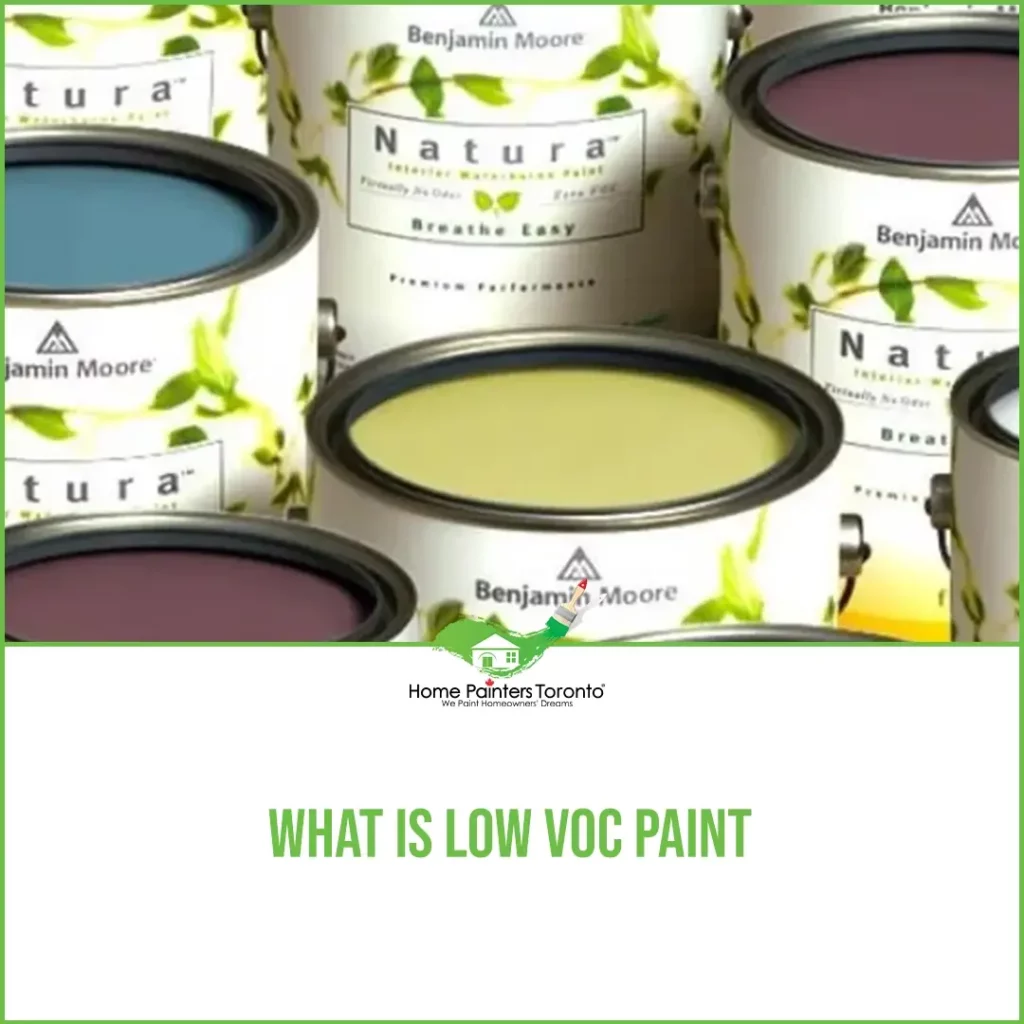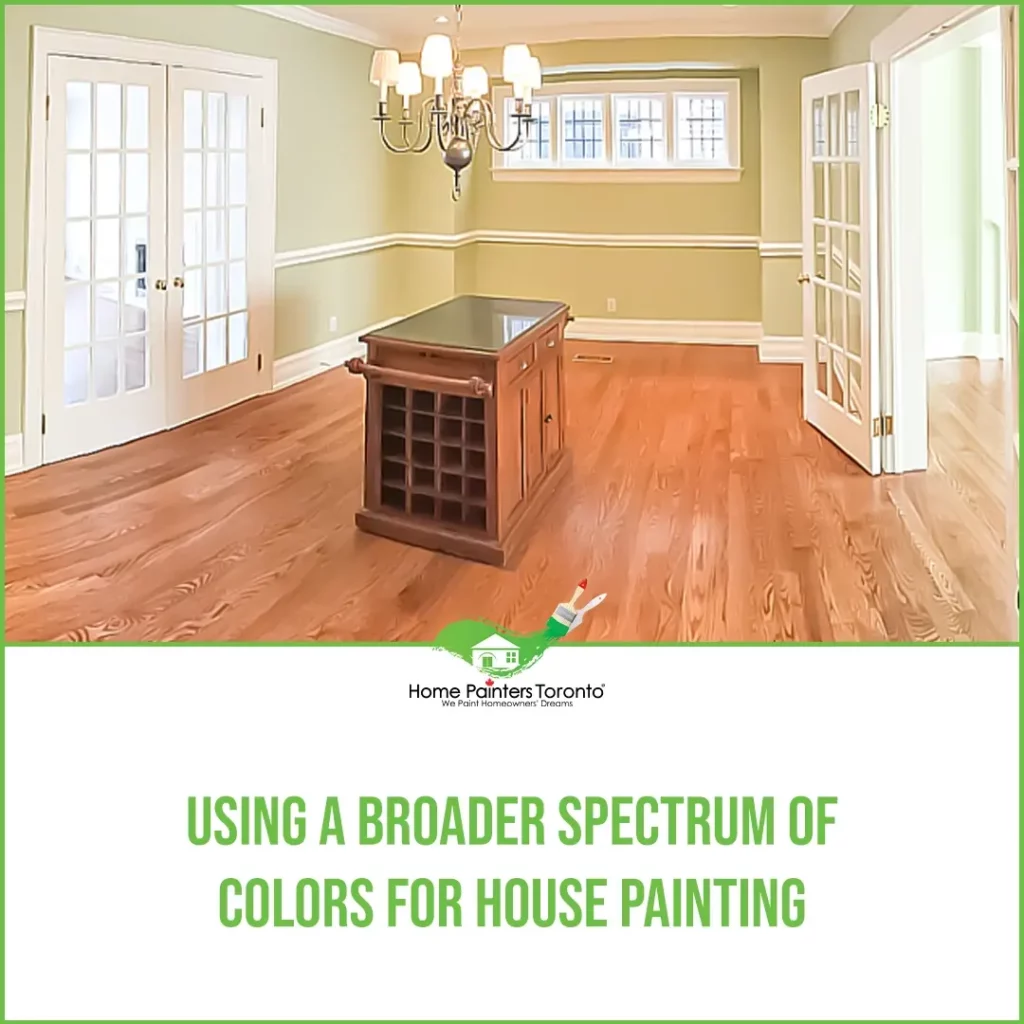
The question of “oil-based paint or latex paint” has been around in the painting world for as long as the chicken and the egg conundrum. Okay, it is a question that is complicated for both homeowners and painters alike. Treat this as one of those teenage magazine columns that try to establish which zodiac sign is best for you. But instead of astrology, figure out if you are more compatible with oil-based paint or latex paint.
Not all paint types are created equal. Along with a variety of brands to choose from, you have to choose between oil-based or latex paint. Each paint type has its perks and benefits, depending on the job that you’re doing.
The Difference Between Oil and Latex Paint?
Latex paint, also known as acrylic paint, is a water-based paint with glycols or glycol ethers as a solvent. The term latex refers to the resin in the paint and does not contain any latex rubber.
Oil-based paint has natural oils like linseed oil or a synthetic alkyd. Oil-based paints consist of pigment, resin and a solvent. These types of paints are extremely durable and are great for high-traffic areas or the exterior of your home.
Selection begins with choosing between oil-based vs. latex paints when it comes to picking paint base. For hundreds of years, people have been using oil-based paints for their impermeability and toughness.
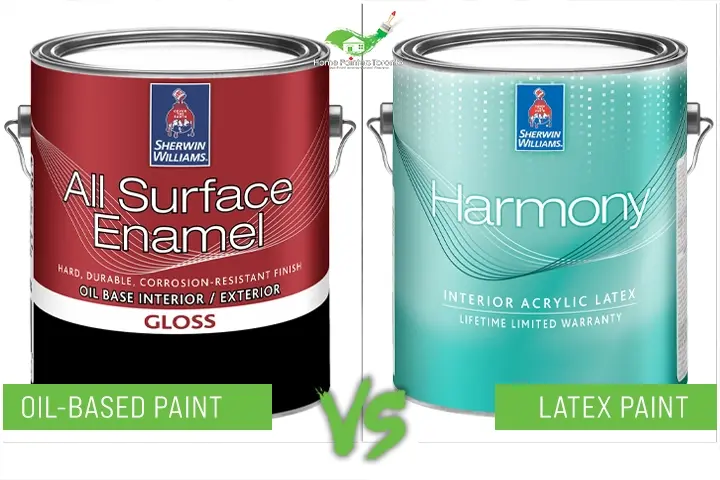
PROS AND CONS OF OIL-BASED PAINT
Achieving a high-gloss, durable finish is easy with oil-based paint. It’s an ideal paint type for exterior painting, as it can withstand the elements.
Unlike water, oil does not dry by evaporation. It dries through a process of oxidation that converts the oil into a polymer chain. This means that the layer formed will be resilient and long-lasting, and will withstand the degenerative effects of water and air longer than water or latex-based paints.
However, there are some major disadvantages of choosing oil-based paints. We’re going to take you through the two very distinct types of interior house paint and why and why not you should choose them.
Disadvantages of Oil-Based Paint
- Paints that are oil-based also have a strong odor that lingers long after the paint has been applied.
- Oil paint is more susceptible to chipping and cracking
- There are more dangerous chemicals in oil paint that the painter needs to be extra cautious about.
- Paints that are oil-based do contain “volatile organic compounds” (VOCs). VOCs are found in this solvent and are released as the paint is drying or being cured. And there are a number of best low voc paint to find in the market so you can choose from those.
- Indoor air pollution has now been identified as being three times more harmful than pollution outdoors.
Disadvantages of Latex Paints
- This latex paint causes the wooden grain to inflate, meaning the painter must sand in between the first and second coats.
- Latex paint is more susceptible to rust metal.
- It cannot be kept in places that will cool or freeze the paint.
- Harder to stick to glossy surfaces.
- Longer wait periods for washing and cleaning the surface.
Interior and Exterior Paints in Canada – Low VOC Paint
For high-traffic and exterior surfaces, oil-based paint will always be a good choice. With the advancement of quality latex paints, there are plenty of great latex options that can be used in the same way that have similar durability.
Government regulations regarding VOCs are becoming stricter; this may be one reason why paints are decreasing in popularity. When you see paints labelled as “low VOC”, they should contain fewer than 50 grams per litre of volatile compounds. That is if it means the Green Seal standards. It’s still important to consider that when it says “low VOC paint”, it’s simply lower in comparison to other paints.
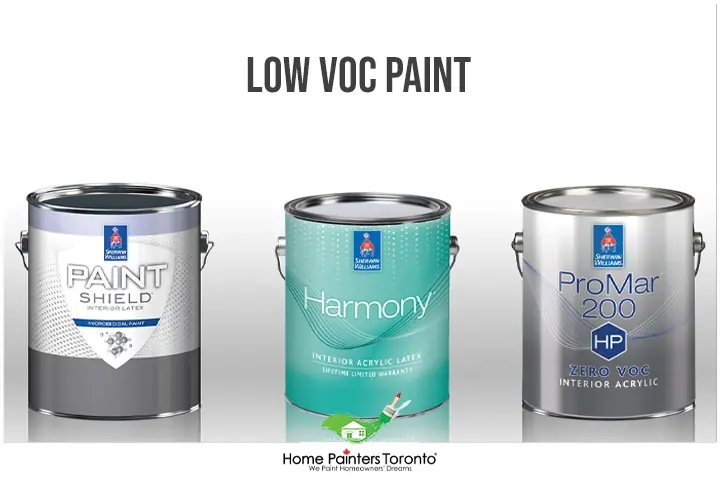
Low VOC paint brands
Some of the best low VOC paint brands include Benjamin Moore Aura, Sherwin-Williams Harmony Zero VOC Interior Acrylic Latex Paint, Clare Paint, Green Planet Paints, and Homestead House Paint Company. Other notable brands include
Valspar Simplicity, BACKDROP, Old Fashioned Milk Paint Company, Magnolia Home Paint, and Earthborn Paint
Advantages of using Latex Paints
- The drying time is significantly shorter than that of oil-based paint, which requires up to 48 hours to dry.
- Has a minimal odour and releases significantly fewer VOCs during the drying process.
- Latex paint also doesn’t yellow over time, which can sometimes happen with oil-based paints.
- Also, far easier to clean up with some soap and water.
- You’ll also likely find that latex paints are far more available and easier to find now as well. Paint thinner is best used to remove a lacquer finish if there’s a mistake that needs correcting. Denatured alcohol is best used to remove adhesive or sticky substances from wood, metal, tile, plastic, and glass.
Because fewer or no VOCs are released, latex paint (acrylic paint) is significantly less harmful to building occupants. In addition, it requires less care to apply than oil-based paint and solvent, which are both highly flammable. Latex paint (acrylic paints) can also be thinned with water, unlike oil-based paint, which requires a special paint thinner.
Why would you need to thin your latex paint? Oftentimes latex paint is quite thicker than oil-based paints. If that’s the case, you can thin the paint yourself before application. Be sure to check the quality of your latex paint prior to the thinning process, though.
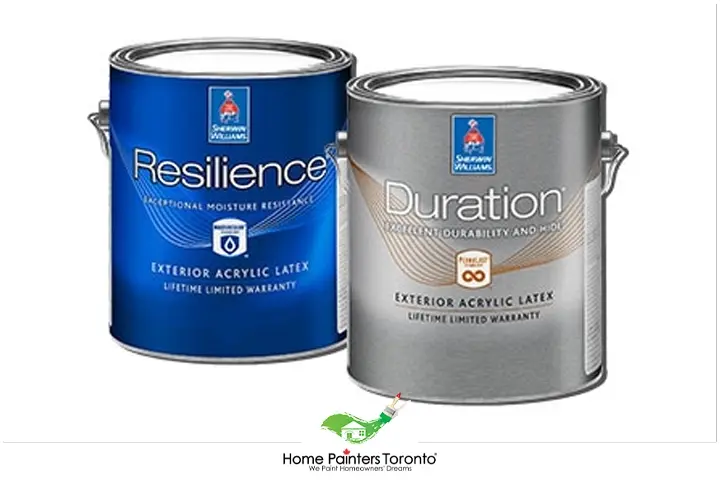
Oil-based Paint vs Water-based Paint: Which to Use for Your Home?
Your choice between oil-based and latex paint depends on your project and personal preferences:
- For walls & ceilings: Latex paint is typically used for walls and ceilings in residential settings due to its fast-drying nature and easy clean-up.
- For trim & furniture: Oil vs latex paint for furniture? Oil-based paints can be an excellent choice for trim, furniture, and doors where toughness and smooth finish are desirable.
- For kitchens & bathrooms: Latex paint, especially semi-gloss or gloss, is commonly used in kitchens and bathrooms as it fares better in high-moisture environments.
Factors to Consider: Matching the Paint to Your Needs
Assessing the Surface and Material
Before you open a paint can, it’s crucial to examine the surface you plan to paint. Different materials require different types of paints. For instance, oil-based paints are terrific for wood trims and doors as they seep into the wood’s grains, providing an excellent, durable finish. On the contrary, latex paint is more suitable for drywall and masonry as it allows the material to breathe and prevents moisture-caused damage.
Evaluate your surface’s current state as well. If your walls have lots of imperfections, oil-based paints, being glossier, tend to highlight these flaws. Latex paint, with its flat finish, can mask these imperfections better.
Evaluating Room Function and Environmental Factors
Another critical aspect to consider is the room’s function and the environmental conditions it has to face. Areas with high traffic, likely to be exposed to more bumps and scuffs, could benefit from oil-based paint due to its durability.
Rooms such as bathrooms and kitchens that endure high humidity levels are better off with latex paint, which is more resistant to moisture. Latex paints with a gloss or semi-gloss finish are generally chosen in these cases since they are easier to clean and more moisture resistant.
Managing Time Constraints and Budget
Latex paint dries considerably faster than oil paint, which could be beneficial if you’re under a significant time constraint. However, if you’re focusing on quality over speed and prefer a smooth, self-levelling finish, the slow-drying nature of oil-based paint would serve you better.
As for budget, latex paint tends to be more budget-friendly than oil-based paint. However, when choosing between the two, it’s better to prioritize the paint’s suitability for the job over cost. Investing a bit more upfront may save you from constant touch-ups and maintenance in the future.
The right paint can result in a prolonged lifespan of the surface, delivering a better return on investment in the long run.
Application Techniques for Different Surfaces
Priming and Prepping for Better Results
Before applying your chosen paint type, it’s crucial to prepare the surfaces to ensure a proper finish. Good preparation involves cleaning the surface thoroughly to remove dust, dirt, and any loose or chipping paint. Use a good-quality primer on bare surfaces or surfaces with stains to promote paint adhesion and obtain uniform coverage.
For oil-based paints specifically, sanding the surface before applying primer can improve adhesion. For latex paints, ensure that the surface is dry and free of excessive moisture before application to avoid paint failure.
Selecting Brushes and Rollers
Choose the right brushes and rollers for your paint type to achieve the best results. For oil-based paints, natural bristle brushes, such as those made from animal hair, help spread the paint more evenly, providing a smoother finish. Synthetic bristle brushes, like nylon or polyester brushes, work well with latex paints. They hold their shape and don’t absorb water, ensuring proper distribution of the paint.
For your roller selection, choose woven or knitted covers for latex paint, while a lambswool or mohair roller is more suitable for oil-based paint. The nap length of the roller also plays a role; use a longer nap for textured surfaces and a shorter nap for smoother surfaces.
Achieving a Consistent and Even Finish
To achieve a consistent and even finish, follow these application techniques:
- Start with a primer: Applying a primer promotes better adhesion and evens out the colour.
- Cut in around edges: Before using a roller, use a brush to paint a strip along edges, corners, and places where the roller won’t fit.
- Plan your painting strategy: Work systematically in a top-down approach. Start with the ceiling and move to the walls.
- Roll in a ‘W’ or ‘M’ pattern: Apply paint with the roller in a ‘W’ or ‘M’ pattern, then fill in the empty spaces while moving parallel to your initial strokes. This method ensures even distribution.
- Maintain a wet edge: Apply paint to an adjacent area while the first section is still wet to avoid the formation of lap marks.
- Apply multiple coats: Two or more coats ensure a uniform and vibrant colour. Let each coat dry as per the manufacturer’s recommended time.
Following these techniques will help you avoid common pitfalls and deliver a consistent and lasting finish whether you use oil-based or latex paint.
FREQUENTLY ASKED HOMEOWNER QUESTIONS
WHICH IS MORE AFFORDABLE, OIL BASED PAINT OR LATEX PAINT?
Oil-based paint can be more expensive up front, but due to the durability and quality of the paint, it can last longer than latex paint. Latex paint is ideal for certain jobs, and some brands can be used in place of oil-based paints.
HOW MUCH DOES PAINTING A HOUSE COST?
The cost for painting services in Toronto can range from $2 to $3 per square foot plus HST. An average-sized home can cost between $3,000 to $5,000 plus HST and large or extra-large homes can cost up to $10,000 and beyond.
Beyond oil- and water-based categorization, paints can also be classified based on their function (e.g. Primers, sealers, binders, finishing paints, etc.). They can also be classified according to the type of pigment used, like zinc, lead, and titanium (each has slightly different properties).
Now that you’ve picked your paint, what about colour?
Now that you’ve learned all about the two main types of interior house paint, do you need a little help picking out the colour? Not to worry, because we have you covered! Check us out on Pinterest, and don’t forget to look below for the top related blogs on picking your desired colour for your home!
FINAL THOUGHTS
When undertaking a home improvement project, it’s important to do your research, especially if you’re brand new to the DIY game. Painting a house is simple, but it’s not easy. It requires some time to research the best products for your budget. If you’re not a do-it-yourselfer, hiring Home Painters Toronto will be the best choice for your painting project.
More Interesting Blogs Related to
“OIL BASED PAINT OR LATEX PAINT – WHICH TO USE FOR YOUR HOME?”
At Home Painters Toronto we have been professional painters for over 36 years, knows how important it is to create just the right atmosphere for you in your home and we guarantee that you will be pleasantly satisfied with our friendly and professional service. We are more than willing and happy to assist you in any ways we can, for any home painting needs. Look no more! Home Painters Toronto is always here for you.
If the work involved in house painting sounds like it involves too much time and energy to do yourself, call 416.494.9095 or email [email protected] for a FREE quote. Or connect with us below on any of our social media accounts as well!


